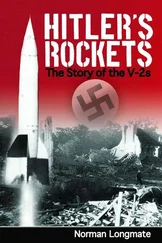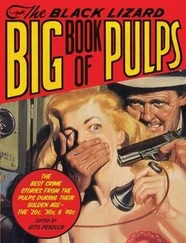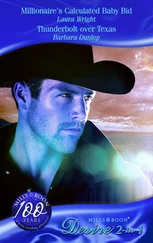Mike Mullane - Riding Rockets
Здесь есть возможность читать онлайн «Mike Mullane - Riding Rockets» весь текст электронной книги совершенно бесплатно (целиком полную версию без сокращений). В некоторых случаях можно слушать аудио, скачать через торрент в формате fb2 и присутствует краткое содержание. Жанр: Старинная литература, на английском языке. Описание произведения, (предисловие) а так же отзывы посетителей доступны на портале библиотеки ЛибКат.
- Название:Riding Rockets
- Автор:
- Жанр:
- Год:неизвестен
- ISBN:нет данных
- Рейтинг книги:3 / 5. Голосов: 2
-
Избранное:Добавить в избранное
- Отзывы:
-
Ваша оценка:
- 60
- 1
- 2
- 3
- 4
- 5
Riding Rockets: краткое содержание, описание и аннотация
Предлагаем к чтению аннотацию, описание, краткое содержание или предисловие (зависит от того, что написал сам автор книги «Riding Rockets»). Если вы не нашли необходимую информацию о книге — напишите в комментариях, мы постараемся отыскать её.
Riding Rockets — читать онлайн бесплатно полную книгу (весь текст) целиком
Ниже представлен текст книги, разбитый по страницам. Система сохранения места последней прочитанной страницы, позволяет с удобством читать онлайн бесплатно книгу «Riding Rockets», без необходимости каждый раз заново искать на чём Вы остановились. Поставьте закладку, и сможете в любой момент перейти на страницу, на которой закончили чтение.
Интервал:
Закладка:
Even though the six females couldn’t metaphorically lift a leg, they were certainly looking at their five peers and measuring the competition. It was a no-brainer one of them would be aboard the first shuttle carrying any TFNG crewmember. The NASA PR machine was chomping at the bit to get a woman in space. While I doubted it would come to hair pulling and face scratching, there was bound to be as much competition among the fair sex as there was among the males.
John Young welcomed us with a few forgettable words, all delivered while he looked at his shoes. Dealing with life-and-death situations as a test pilot and astronaut hadn’t endowed Young with any public speaking skills. He seemed nervous and hesitant to make eye contact with his audience. It was a personality trait we would learn wasn’t just associated with welcoming speeches. (The things Life never mentioned.) His stature and voice made him even less compelling. Like all the earliest astronauts, he was short and small framed. He was a Florida boy, and he had the accent and vocabulary of one. He frequently used the expression “them boys” in reference to anybody outside the astronaut office. He wasn’t warm or approachable. Reclusive wouldn’t be far from the mark. But he did have a great understated humor. When Florida named one of Orlando’s main thoroughfares the John Young Parkway, John said, “Them boys shouldn’t have done that. I ain’t dead yet.”
He didn’t leave his wit behind when he flew in space. On STS-9, when two of Columbia ’s computers failed in orbit, causing a major and potentially life-threatening problem, John looked at his pilot, Brewster Shaw, and said, “This is what they pay us the big bucks for.” He was probably making $70,000 a year at the time.
The meeting proceeded with Young and Crippen, the crew for the first shuttle flight, discussing their mission preparations. We TFNGs were still naïve enough to believe the NASA press releases proclaiming the first shuttle mission would fly in 1979. NASA HQ was loathe to admit to Congress that the machine was well behind schedule, and so they published wildly optimistic timelines about as likely to be achieved as the Chicago Cubs winning the World Series. (STS-1 would ultimately launch on April 12, 1981.) One of the veterans would tell us what the acronym NASA actually stood for: Never a Straight Answer. We learned to add years to any dates provided in a NASA press release about the shuttle schedule.
There was little we newbies could understand in the discussions that swirled around the table. The language of NASA was so laden with acronyms that it took many months to become fluent. The commander of a mission wasn’t called the “commander.” He was the CDR, pronounced as the individual letters…C, D, R. And a pilot wasn’t called a “pilot.” He was a PLT, again pronounced as the individual letters. A pulse code modulation master unit wasn’t called such; it was a “puck-a-moo.” I have heard entire conversations between astronauts without a single recognizable noun in them. “I was doing a TAL and Sim Sup dropped the center SSME along with the number-two APU. Then MS2 saw an OMS leak, we got a GPC split…”
So we just listened in silence to the technobabble. At the close of the meeting, when Young asked if any TFNGs had anything to say, we all sat on our hands. All except Rick Hauck. There was a stir among us as he raised his hand. Surely he wasn’t going to make a technical contribution? was our collective thought. Could he be that far ahead of us? Our competitive paranoia roared to life.
But Rick’s comment wasn’t technical. He just asked if all the TFNGs would remain in the room to cover some administrative items. A secretary entered and passed around copies of our official NASA photos for our review. We had posed for these as part of our in-processing. Now the mail room was filled with thousands of lithographs in which we had been perpetually frozen as smiling, thirtyish, flight-suited youths. Decades later, when there was little resemblance to the actual living person, these first photos were still being sent out. No doubt they have been a source of great confusion when used by American Legionnaires and city officials and others waiting to identify their astronaut luncheon speaker exiting an airport jet way.
Next, the secretary placed a few paper tablets on the table and asked us to give a sample signature for the auto-pen machine. Autographs! Apparently the world would be clamoring for our autographs in such quantities that NASA had a machine to automatically pen them. If there was ever an indication of the new world we had entered, it was this. Except on checks, I had never been asked for an autograph in my life.
I took a page and penned Mike Mullane. It didn’t look right. Too small, too tight, too anal, I thought. My “Ms” in particular looked like they had been made with a nun standing over me. They were too legible. Each was composed of symmetrical double humps that would have fit perfectly into the capital line guides of my third-grade Red Chief tablet. Such a signature would never do. It seemed to me famous people always had illegible signatures. I took another page and tried a radical swipe and imagined how it would look on a photo on some collector’s wall. It appeared as fake as it was. Another page bit the dust. I tried signing faster, slower, with more slant, less slant…I wanted an autograph that would dazzle. Then it dawned on me. Everybody was doing the same thing. An act that had been as casual as, well, signing your name had suddenly become a quest, a personal challenge. I looked around and saw several TFNGs intensely studying their pages. A few tongues worked around the corners of mouths. To produce the perfect autograph was hard labor. I was witnessing the definition of astronauts…competitive to the nth degree. They even beat the shit out of their own muses. Why can’t you come up with a memorable autograph, goddamn you! I could hear the buzz of pages disappearing from the tablet, ammunition being expended in thirty-five private wars to produce the perfect signature. By the time the secretary had her autographs for the auto-pen machine, a small forest had been wasted.
Chapter 9
Babes and Booze
Over the next several months we continued our agency indoctrination by visiting NASA “centers” around the country. Like all government agencies, NASA spreads its operations over multiple states to gain the largess of as many congressional delegations as possible. We flew in private NASA jets to Kennedy Space Center, to NASA Ames Research Center in Mountain View, California, to Marshall Spaceflight Center (MSFC) in Huntsville, Alabama, and to several other NASA and contractor facilities scattered around the country. At each location we were introduced to the workers, took tours, and received briefings on the operations of each facility.
There was a social agenda as well. Many nights would find us at a cocktail reception or dinner hosted by a local community official. Some of these events were more work than fun. Attendees clamored for autographs and photos. Or the press would be invited and they would squeeze us for interviews. For the most part, though, we were good ambassadors for NASA and warmly welcomed the attention. The women probably welcomed it less so. With each passing day it was becoming more evident that the major focus was on them. Even the black TFNGs would become as invisible as us white guys whenever Judy or Rhea or Anna—the triumvirate of TFNG beauty—walked into the room. They were particularly dazzling when they were dressed in their dark blue patch-covered flight coveralls. There wasn’t a man or woman in any public setting who didn’t stare. I recall one local politician questioning several of us men at a party. He was totally focused on our comments until Judy walked by in her flight suit. Then he interrupted us, said, “Excuse me,” and hurried to catch up to Judy. We were abandoned like the out-of-state voters we were.
Читать дальшеИнтервал:
Закладка:
Похожие книги на «Riding Rockets»
Представляем Вашему вниманию похожие книги на «Riding Rockets» списком для выбора. Мы отобрали схожую по названию и смыслу литературу в надежде предоставить читателям больше вариантов отыскать новые, интересные, ещё непрочитанные произведения.
Обсуждение, отзывы о книге «Riding Rockets» и просто собственные мнения читателей. Оставьте ваши комментарии, напишите, что Вы думаете о произведении, его смысле или главных героях. Укажите что конкретно понравилось, а что нет, и почему Вы так считаете.












